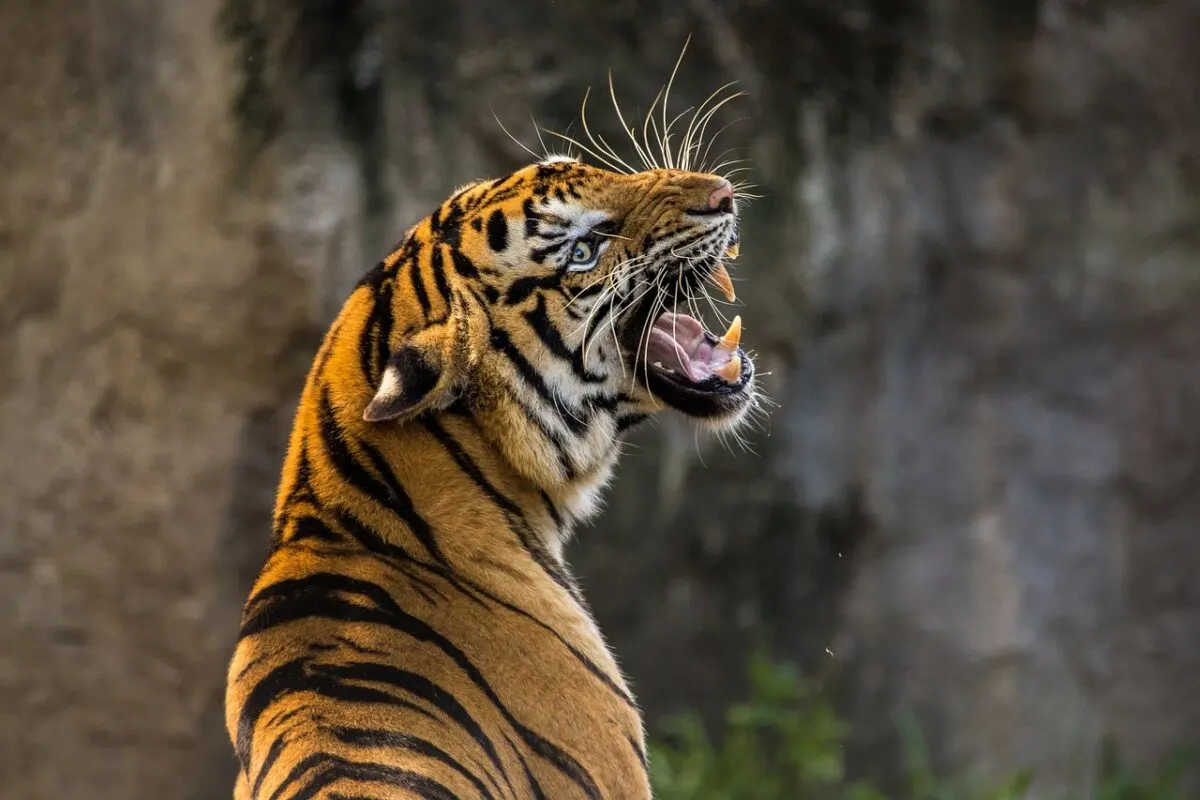We’re about to compare two animals with extremely different strengths and abilities – the Tiger Vs. Gorilla!

Both the tiger and gorilla are often titled “the king of the jungle,” so have you ever wondered what would happen in a fight between these two formidable animals? From size, strength, and agility to natural weapons, this matchup has all the makings of a classic battle.
In this blog post, we will examine the physical attributes between tigers and gorillas and discuss which one might emerge victorious if they were to face off against each other in a fight.
Comparison Table: Tiger Vs. Gorilla

| Gorilla | Tiger | |
| Scientific name | Gorilla | Panthera tigris |
| Habitat | Tropical forests of Africa | Tropical forests, grasslands, and swamps of Asia. |
| Size | Height: 5 to 6 feet tall Weight: Up to 550 pounds | Length: Up to 11 feet Weight: Up to 660 pounds |
| Diet | Herbivorous, mostly fruit vegetation, such as leaves, stems, bark, and flowers | Carnivorous predators and primarily hunt large mammals |
| Endangered Status | Endangered, with a decreasing population due to habitat loss and hunting | Vulnerable, with a decreasing population due to habitat loss and poaching. |
Tiger
Tigers are a fascinating and majestic species with striking physical characteristics and unique hunting habits. In this blog post, we’ll delve into the fascinating world of tigers. We’re about to explore their physical appearance, habitat, diet, social structure, breeding habits, and interactions with humans.
Physical Characteristics
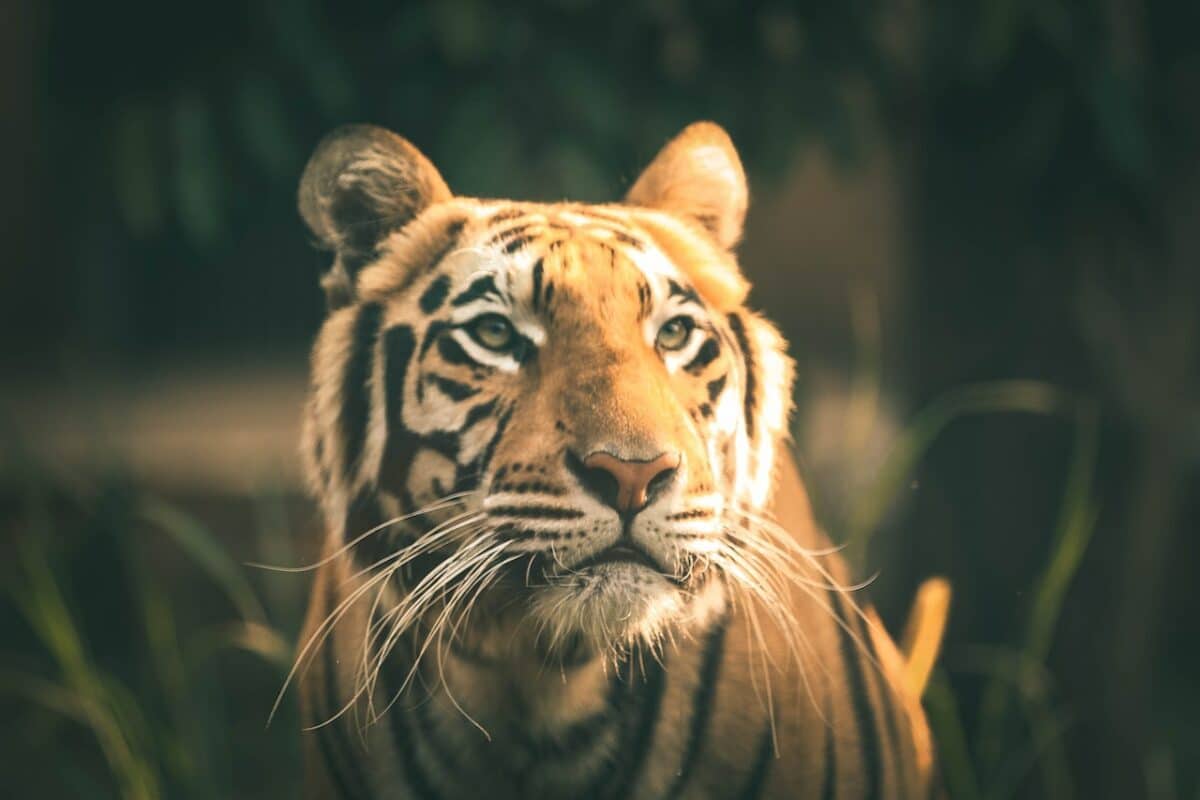
Tigers are known for their distinctive stripe pattern, which helps them to blend into their surroundings and remain camouflaged when hunting. They have a muscular build, with powerful legs and sharp claws, and can grow up to 11 feet in length from nose to tail. The weight of tigers can vary depending on the subspecies and gender. Adult male tigers can weigh anywhere from 200 to 660 pounds, while females typically weigh between 140 and 370 pounds. There are several subspecies of tigers, each with its own variation of these physical characteristics.
Habitat and Distribution
This fierce species resides in various habitats, including tropical forests, grasslands, and swamps. They are typically native to Asia, including countries such as India, Bhutan, China, and Russia. Due to the destruction of their natural habitat, tigers are now classified as endangered. Sadly, only a few thousand remaining in the wild.
Diet and Habits
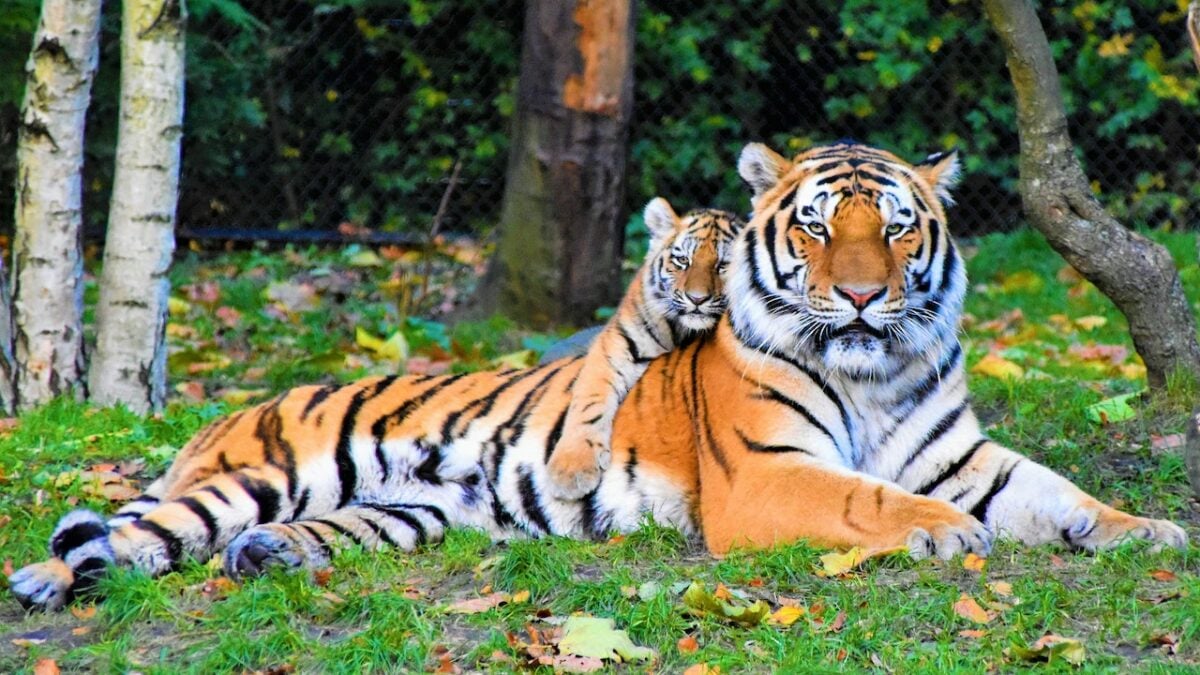
Tigers are carnivorous predators and primarily hunt large mammals such as deer, wild boar, and buffalo. They are solitary hunters who use their stealth and powerful muscles to stalk their prey, often waiting patiently for hours before striking. Tigers are known to take down animals that are many times their size.
Social Structure and Breeding Habits
Tigers are solitary animals but have been known to form social attachments. Males are territorially dominant, while females are responsible for raising cubs and will do so in a den hidden from sight. Tigers are solitary breeders, and females usually give birth to a litter of 2-3 cubs.
Interaction With Humans
Tigers have been feared and revered by humans for thousands of years. Many cultures incorporating them into their mythology and folklore. Unfortunately, human activity has led to the decline of tiger populations, with habitat destruction and illegal poaching being significant threats
(Responsible tourism can help tiger conservation, read about tiger safaris here.).
Efforts to protect tigers and their habitats are ongoing, but much work remains to be done to ensure the survival of this magnificent species.
Gorilla
Gorillas are potent animals – pound for pound; they can easily outperform even the most vital humans! They have powerful arm muscles which enable them to move quickly through dense vegetation and climb trees up to 10 meters high.
Despite this strength, gorillas aren’t particularly speedy animals. They tend to move very slowly on the ground at around one mph. However, they can reach speeds of up to 18 mph when leaping through trees or running along branches.
Physical Characteristics
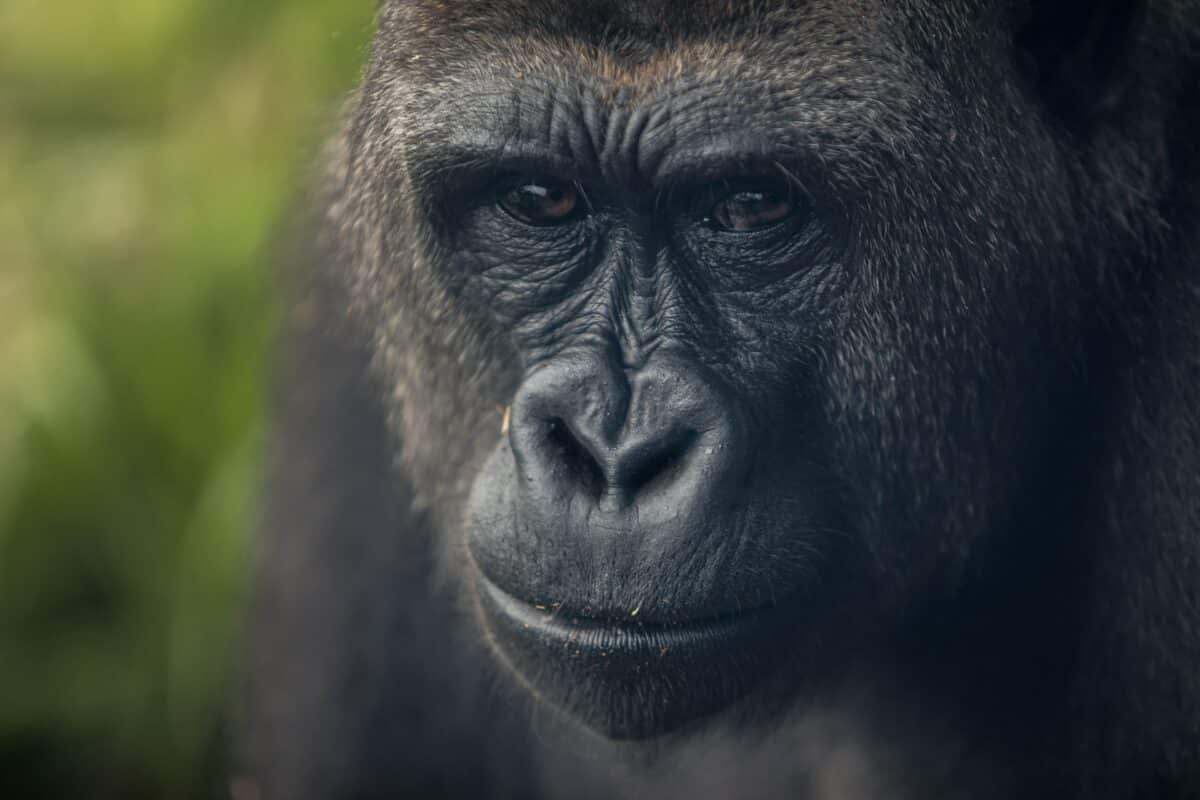
Gorillas are large primates. Males typically standing between 5 to 6 feet tall when upright and weighing up to 500 pounds. Females, on the other hand, typically weigh between 150 to 250 pounds. The largest subspecies of gorilla, the eastern lowland gorilla, can weigh up to 550 pounds. They have thick black fur covering most of their body, except for their face and hands, which are usually gray.
Also, Gorillas have much longer arms than their legs, enabling them to travel by knuckle-walking on all fours through the dense forest habitats they inhabit. Their heads are rounded with flat noses, small ears, tiny eyes, and expressive mouths, often showing the well-known ‘grin’ associated with gorillas.
Habitat and Distribution
Gorillas live in tropical rainforests in central Africa, primarily in countries like Uganda, Rwanda, the Democratic Republic of Congo (DRC), parts of Cameroon, and the Central African Republic (CAR).
Depending on the species, they live in lowland forests or mountainous regions at altitudes between 6500 – 13000 feet. Gorillas prefer habitats with dense canopy coverage where they find food sources such as fruits, leaves, stems, and bark more easily. Sadly, their populations are declining – read this post of ours to find out how many gorillas are left in the world.
Diet and Habits

Gorillas are primarily herbivorous animals that feed mainly on fruits but eat other vegetation, such as leaves, stems, bark, and flowers, if available seasonally.
They also occasionally consume small amounts of insects or other invertebrates as part of their diet, but these comprise only a tiny proportion of their calories (around 1%).
Adult gorillas spend an average of 8-10 hours daily feeding, while infants spend around 4-5 hours per day eating due to their smaller stomach capacity.
Social Structure and Breeding Habits
Gorillas are part of the great ape family and have a complex social structure that revolves around a dominant male called the silverback. They are typically the largest and strongest males of the group and are responsible for protecting their families and leading them to food sources and nesting sites. Silverbacks are the leaders of a group of gorillas, known as a troop, and can have up to 30 members.
Females in the group are also significant, as they create a strong bond with the silverback and provide protection and care for their young.
The breeding habits of gorillas are also unique. A female gorilla typically only gives birth to one offspring at a time, and the mother will raise the baby until it reaches adolescence. It is also interesting to note that male gorillas do not give much attention to their offspring and instead focus on protecting the troop.
Interaction With Humans
Gorillas have gained attention from humans because of their size, intelligence, and behavior. Unfortunately, with human intrusion in their natural habitat, these creatures have become endangered, making it imperative that we conserve these apes.
Conservation efforts have been ongoing for a while now, with programs that promote eco-tourism and education focused on the importance of conservation. Harm reduction policies, where forest rangers protect gorillas from poachers, have been implemented to ensure these magnificent animals’ safety.
Key Points
| Tigers are known for their distinctive stripe pattern, which helps them to blend into their surroundings and remain camouflage when hunting. |
| There are several subspecies of tigers, each with its own unique physical characteristics and geographic distribution. |
| Gorillas are large primates, with males typically standing between 5 to 6 feet tall when upright and weighing up to 500 pounds. |
| Gorillas are primarily herbivorous animals that feed mainly on fruits but eat other vegetation, such as leaves, stems, bark, and flowers. |
| Tigers are carnivorous predators and primarily hunt large mammals. |
Tiger Vs. Gorilla Bottomline
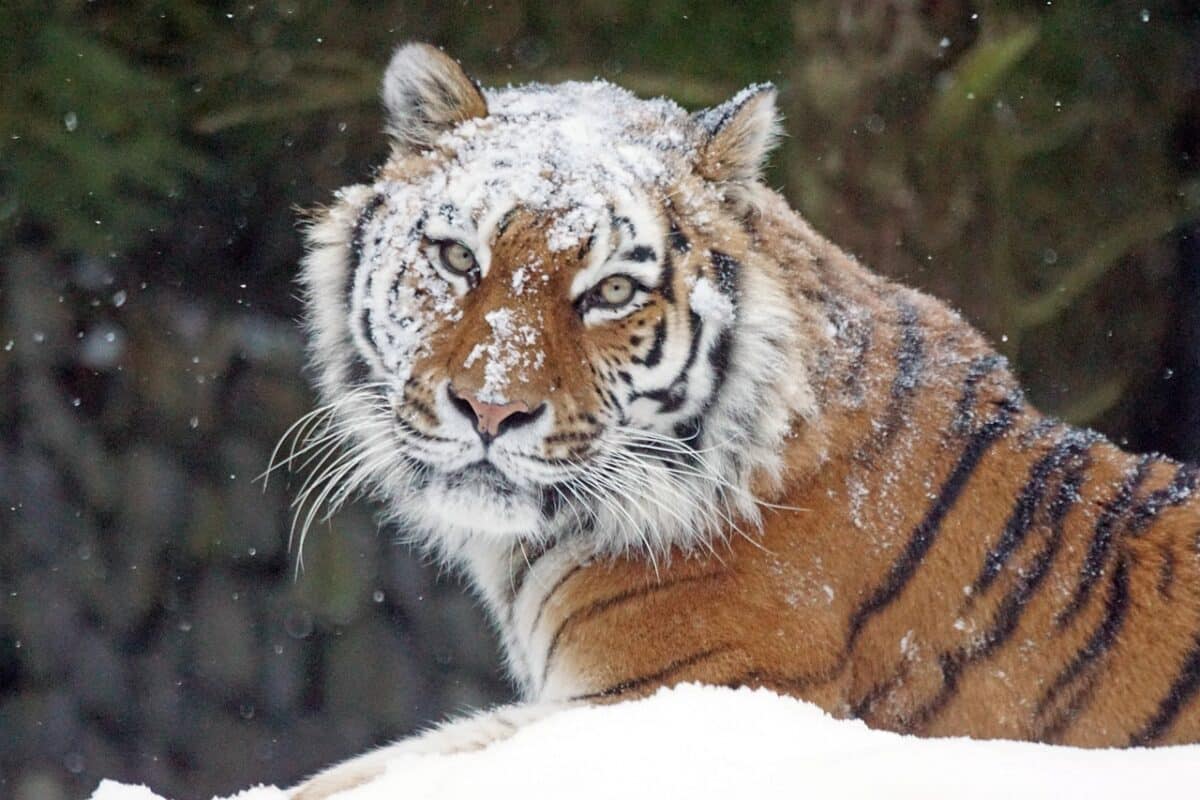
In conclusion, the comparison between tigers and gorillas showcases each animal’s unique traits and strengths. While tigers are robust and agile hunters with sharp claws and teeth, gorillas demonstrate remarkable strength and intelligence.
The two animals, however, rarely cross paths in nature due to their different habitats and hunting styles. Choosing a winner in a hypothetical fight between the two would be difficult, as both exemplify remarkable physical abilities.
Nonetheless, it’s essential to appreciate and protect our world’s diverse animal range and continue learning more about their behavior, habitats, and unique qualities.
Thank you for reading this article on the Tiger Vs. Gorilla! If you’re curious to see the gorilla in another hypothetical battle, read our post where it battles the elephant.
- Magpie Bird Is Reunited with Her Dog Best Friend - April 24, 2024
- Dog Saves Another Dog From Drowning in Fish Pond - April 23, 2024
- Man On Motorbike Rescues Cat From Highway - April 23, 2024

